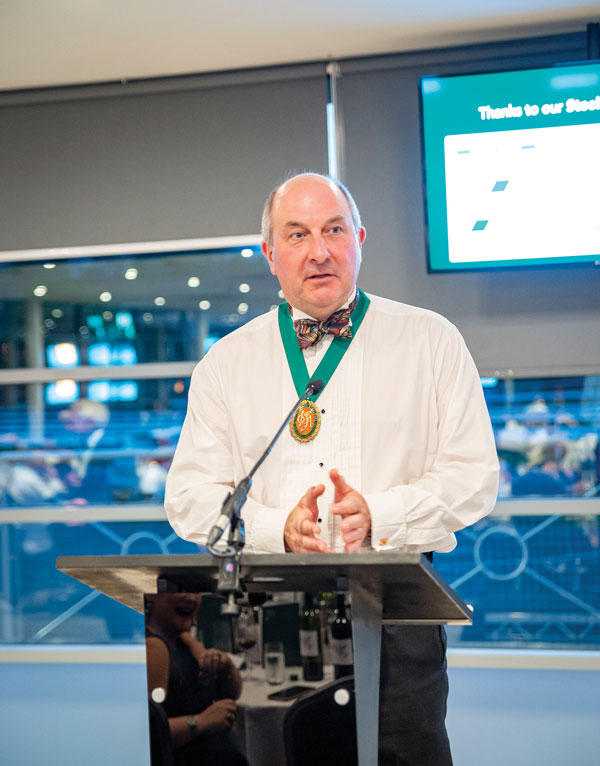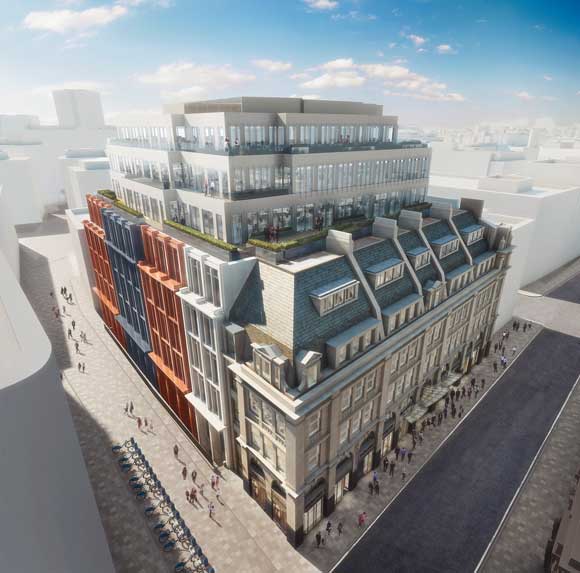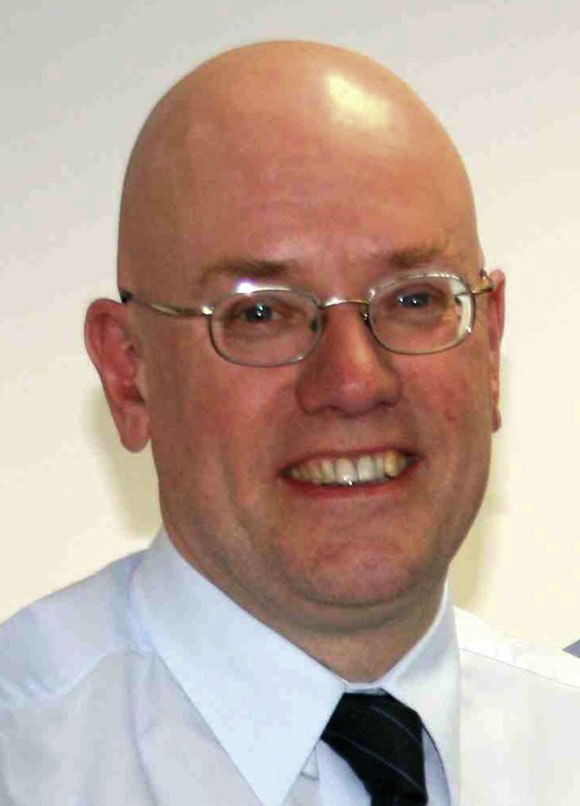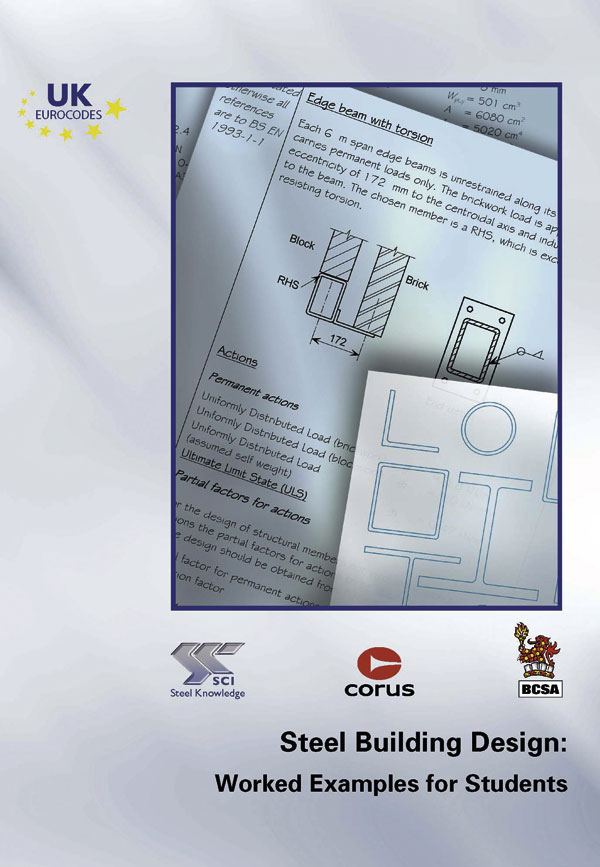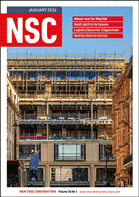Profile
New President sees need to educate market in best ways to achieve low carbon targets
BCSA’s new President Chris Durand aims to focus on attracting people to the constructional steelwork sector, and more of the supply chain to BCSA membership. He tells Nick Barrett that the UK needs domestic production of both EAF and BOS produced steel to achieve low carbon targets.
Chris Durand couldn’t quite justifiably be called an accidental engineer, but for one of the UK’s most senior people in his field, the BCSA’s new President didn’t chart his way to the heights he has reached with the high precision and accuracy his work is known for.
“I fell into it I suppose,” he recalls. “I had summer and part time jobs on construction sites of various sorts thanks to family who worked in the industry, but that was all it was at first.”
Born in Ealing, west London, Chris grew up in Southall and then in nearby Hayes, Middlesex, attending local schools until earning his ‘A’ Levels in 1986. With his father having been born in Jersey, Channel Islands, of French parents, and his mother being from Northern Ireland, and having spent eight years studying in Scotland, the keen and useful rugby player was eligible to play for England, Wales, Scotland, Ireland or France. None of the international selection committees got in touch, however, and he soon knuckled down to focus on a career.
The structural engineer-to-be soon felt the allure of a career in construction, working with teams responsible for creating striking architectural designs. “I saw the attractions in time to decide that a degree in civil engineering would be the best way for me to proceed with a career in the industry, although at that time I didn’t see myself as a designer.” That did come later however.
Four years taking a Civil Engineering degree at Dundee University followed, almost delayed by missing six weeks of ‘A’ Level studies due to hospitalisation. “That meant I didn’t get all the grades I expected, so I didn’t get my first choice university spot. But I was delighted with the course at Dundee, and it delivered academically, as well as being a great town to be in the middle of and surrounded by wonderful countryside.”
An interest in structural engineering had obviously been sparked as Chris chose the ‘structures’ option on his degree course. Chris credits that initial spark of interest to a General Foreman he met on one of his student stints on site. “I really enjoyed the contracting side, but this GF said I was showing aptitude for working in a design office, which on reflection is something I should have realised before then.” The GF, as is often the case, turned out to be right.
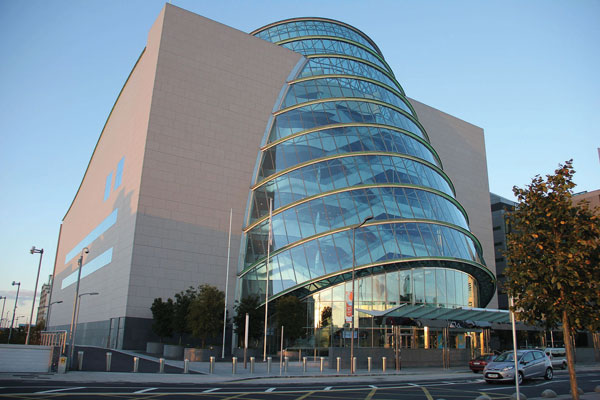
Dundee University must have provided a satisfying stay, as after the Honours course, which is four years in Scottish universities, Chris stayed there to earn his Doctorate in Structural Engineering (Steelwork Connection Design), specifically the behaviour of long fin-plate structural steelwork connections. “That was another three highly productive and enjoyable years.”
Finalising his Phd unfortunately coincided with one of construction’s periodic downturns, and jobs for fresh faced Doctorate holders, even ones with actual site experience, were few and far between. Chris’ parents had by this time retired to Northern Ireland, and he went to sit out the downturn living with them in 1994, or, as Chris puts it: “I couldn’t get a job straight away and decided to sponge off the parents.”
When the industry’s tide turned, Chris was offered a job in Belfast by a local consulting engineer: “Surprisingly, I received a job offer from Barr & McCormick Consulting Engineers, (now Tetra-Tech), in Belfast, where I worked from 1994 – 1998. While working there, I met the late Bertie Fisher who offered me a position with Fisher Engineering in County Fermanagh, and there I have been since 1998.”
His work for Barr & McCormick involved working on the design of a wide range of private and public sector projects, not all of them steel structures. Chris recalls working on one reinforced frame building that fell victim to a bomb attack.
Taking the job with Fisher Engineering was a career landmark, Chris says. “While with Barr & McCormick we worked with Fisher Engineering on the trial erection and assessment of a large truss, and they must have liked what they saw because they offered me a job as a design engineer.”
The company was a leading player in the Northern Ireland construction industry, employing about 180 people. “It was a bit of a step into the unknown, learning about steel fabrication and erection, as well as design. But I enjoyed the relaxed attitudes I found at Fisher and liked the projects we worked on.”
Chris met and was impressed by Bernie Fisher, the company’s founder, who tragically died with family members in a helicopter crash in early 2001. “That was a body blow to Fisher Engineering and all who knew Bernie Fisher. The company had been growing steadily, and I had been promoted to Chief Engineer. But under continued family leadership the company survived.”
By 2008, Fisher Engineering had caught the eye of expansion-minded Severfield, which took over the company. It came as a surprise to some in the industry, but with hindsight, looked like a logical move. It worked well and the Northern Ireland operations continue to thrive as part of the larger and international Severfield Group.
Chris’ career continued to thrive, and he was promoted to Design Director. With Severfield, he has worked on many notable projects across the UK, Ireland and Europe, including the Titanic Signature Building in Belfast, the National Conference Centre in Dublin, and the BBC’s Broadcasting Centre in Cardiff. Recent projects include The Janet Harvey Hall (Frigate Factory) for BAE in Govan, Glasgow, and The Edge Building at London Bridge.
He won the IStructE Guthrie Brown Award for his paper on Dundrum Town Centre Redevelopment. Chris is now a Fellow of both the Institution of Structural Engineers and the Institution of Civil Engineers. Moreover, he is an International Welding Engineer qualified to certify all welding operations up to and including Execution Class 4.
His involvement with the BCSA began after he stepped down from the Regional Chairmanship of the Northern Ireland IStructE branch and represented Severfield (NI) on the BCSA Regional Committee. He also attended the P&T Committee on behalf of the NI Region. He went on to serve as NI Regional Chairman twice before becoming Deputy President in 2023.
He is well settled and now strongly rooted in Northern Ireland. “I met my wife in the pub in Kesh, and we have been married since 2008. We have ten-year-old twins, Cameron and Alicia, and live in a country house complete with sheepdog and rabbit.
“My main interests outside of work are boating, fishing and football, whether supporting Arsenal or providing a match chauffeur service for Cameron, who plays for Ballinamallard United.”
Chris’ focus in his two year Presidency will be on increasing the status and reputation of the BCSA in the wider world and also among steelwork contractors, and companies eligible for industry member status. “It would be to the benefit of all steelwork contractors if there was one voice for the sector, and the best placed organisation to do that is obviously the BCSA.
“A lot of companies that we would like to see as members, and who benefit considerably from our efforts, are failing to support the sector by remaining outside. They would not be able to perform to the high standards demanded by modern construction if it wasn’t for our involvement in the development of codes and standards and lobbying government. Some of them wouldn’t be able to have a business.
“We also have to focus on educating the market about the best ways to achieve low carbon targets, which is not just by demanding the use of EAF steel exclusively on their projects.
“We can do some EAF, but we also need BOS produced steel, and we need some UK production of both.”
Chris welcomes the benefits that AI promises to deliver, but urges caution. “We still need to be able to exercise engineering judgement. For example, there is an example of a portal frame design that passed the code checks but any steelwork design engineer could see would not work. It is hard to check computer models, and harder the more sophisticated they become. Maybe we need to take a step back and think about what we are doing.”
Another focus will be attracting people to the industry. “We need to make the industry more attractive to young people especially, which means aiming at schools.” Sending people into schools like that general foreman who set Chris off on such a highly successful career in structural engineering might be a good idea.

